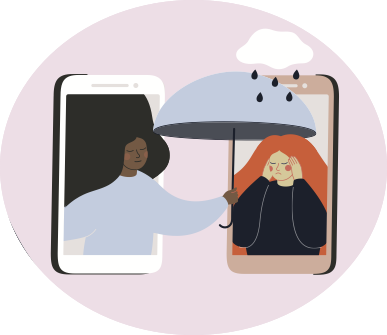Insights From Students: Emotional and Mental Health [downloadable]
 National nonprofit YouthTruth surveyed 222,837 students at 845 schools across 20 states about their emotional and mental health.
National nonprofit YouthTruth surveyed 222,837 students at 845 schools across 20 states about their emotional and mental health.
The resulting fall 2022 YouthTruth report provides insights into students’ perceptions of happiness, suicide, bullying, counseling programs, and why – or why not – students are able to access help at school.
10 Key Insights
Obstacles to learning
1. “Depression, stress, and anxiety” is the most prevalent obstacle to learning for secondary students at every grade level, six through twelve.
2. The overall percentage of secondary students who identify “getting picked on or bullied” as an obstacle to learning drops from grades six through twelve; however, LGBTQ+ middle and high school students report at double the percentage of their peers that bullying is an impediment to learning.
The happiness gap
3. The percentage of children and youth who feel happy about their lives declines from grades three through twelve.
4. At every grade level there is a gender happiness gap as a larger percentage of boys report feeling happy about their lives than their classmates who identify as female or non-binary.
Getting help
5. Just over one in five middle and high school students report that they have accessed a school counselor, a therapist, or a psychologist when they are feeling upset, stressed, or having a problem.
6. Fewer than half of middle school students and just over a third of high school students agree that their school has services or programs that help them when they are upset, stressed, or having problems.
Talking to someone
7. The percentage of elementary students who report that they have an adult they can talk to at school when they are upset drops steadily from third grade (61 percent) to fourth grade (55 percent) to fifth grade (50 percent).
8. Fewer than half of secondary students, regardless of grade level, gender, race, or LGBTQ+ status, report that they have an adult at school they can talk to when they feel upset, stressed, or have a problem.
Suicide
9. Overall 13 percent of middle school students and 14 percent of high school students report that they have considered suicide in the last year.
10. There is no significant difference in the percentage of youth reporting that they have considered suicide in the previous year by grade level or by race; however, there are alarming differences by gender identity and LGBTQ+ status.
Additional Data
For students in grades six through twelve, depression, stress, and anxiety are the most frequently cited obstacles to learning. At the high school level, over 50 percent of students at every grade level cited depression, stress, and anxiety as an obstacle to learning, making it ubiquitous in the culture of American teenagers.
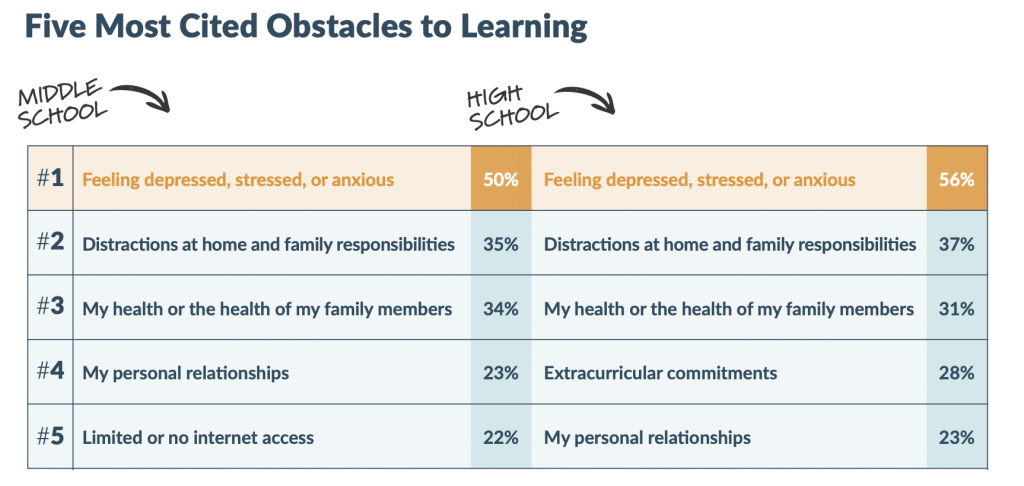
Regardless of gender, race, or LGBTQ+ status, there is no demographic group of secondary students who agree at over 50 percent that they have an adult at school they can talk to when they feel upset, stressed, or have a problem.
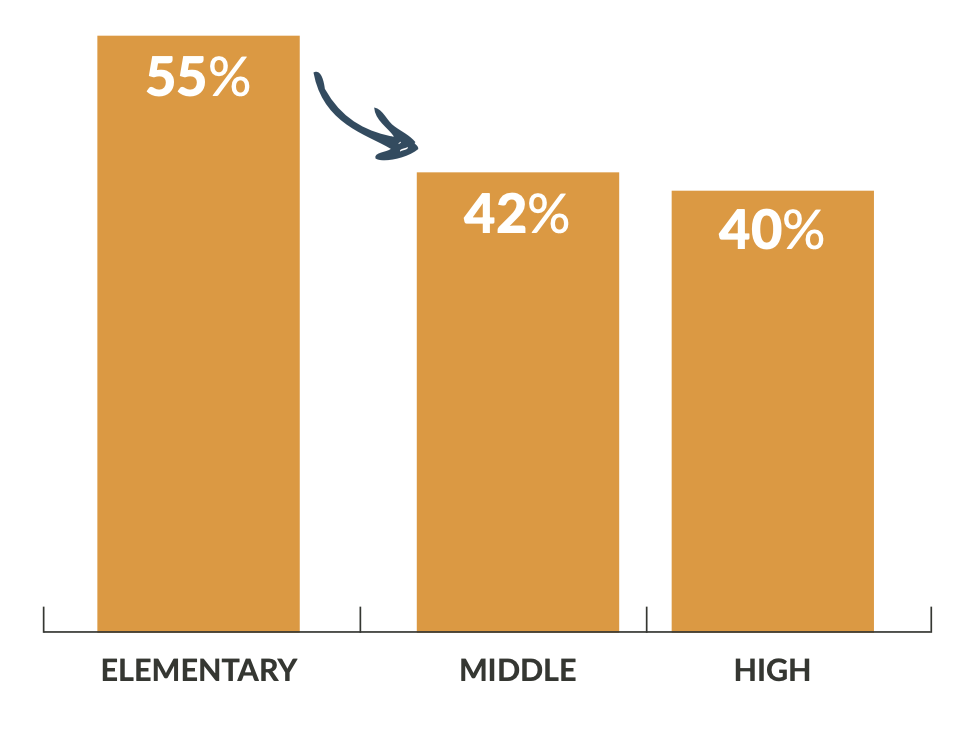
Overall 13 percent of middle school students and 14 percent of high school students report that they have considered suicide in the last year.
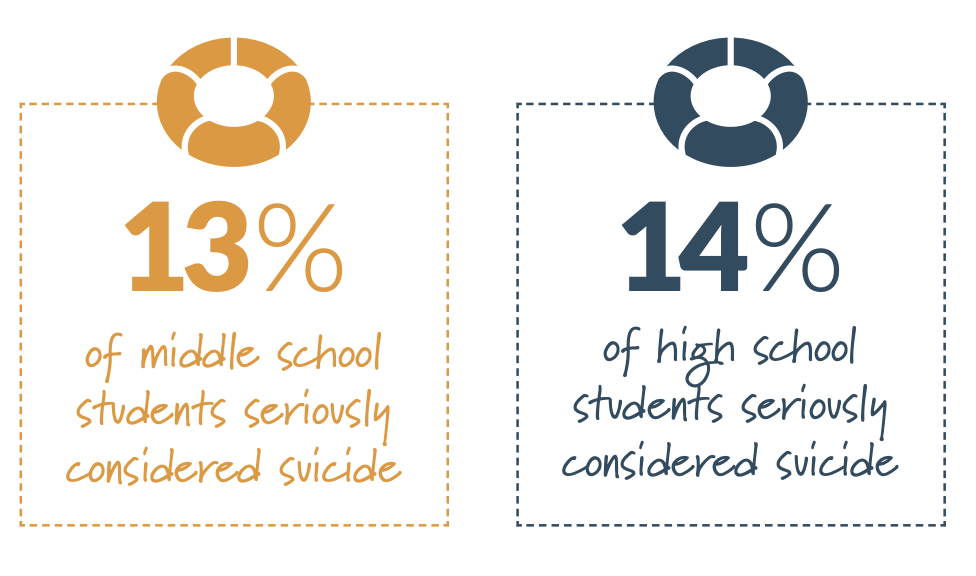
While there is no significant difference in reporting rates by grade level or by race, there are alarming differences by gender identity and LGBTQ+ status. A full 32 percent of LGBTQ+ middle school students report that they have considered suicide, four and half times higher that their non-LGBTQ+ peers (7 percent). And this pattern holds in high school where again 32 percent of LGBTQ+ students report that they have seriously considered suicide compared to their peers (8 percent).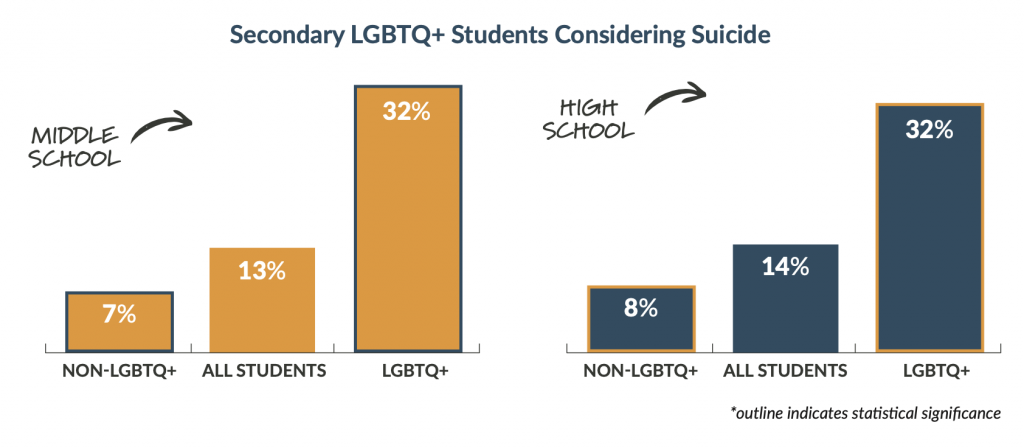
Excerpted from “Insights From the Student Experience, Part I, Emotional & Mental Health,” a report from YouthTruth. Download a PDF of the report for more details on ten key insights.
Source: YouthTruth | Insights From the Student Experience, Part I, Emotional & Mental Health, https://youthtruthsurvey.org/wp-content/uploads/2022/10/YouthTruth_EMH_102622.pdf | copyright 2022, YouthTruth.org
Do you need someone to talk to? To schedule an evaluation or to get advice about your child’s or teen’s challenges, call or email a CHC Care Coordinator at 650.688.3625 or careteam@chconline.org CHC teletherapy services are available now.

